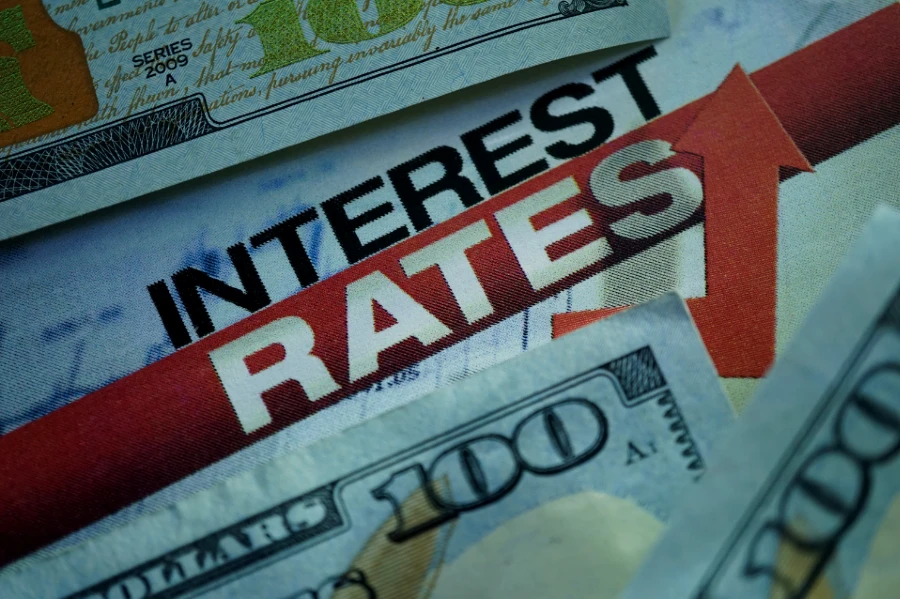Important Factors Affecting Interest Rates
Between 1971 and 2024, interest rates in the United States averaged 5.42%. The highest recorded was a whopping 20% in March 1980, and the lowest is recorded as being just .25% which happened in December 2008.
Interest rates play a crucial role in the global economy, influencing everything from consumer spending to business investments and government policies. When interest rates shift, every sector feels its impact.
For both individuals and businesses, it’s essential to understand the main elements that cause these changes to make knowledgeable financial choices. Whether you’re taking money for a home loan, business funding or just placing your funds in savings accounts, interest rates can have big effects on your financial outcomes.
In this article, we’ll go deeper into the important elements that influence interest rates. We’ll explain why they change and how these changes can affect daily financial choices.
Government Policies and Central Bank Actions
Government policies, especially those determined by central banks, lead to changes in interest rates. Central banks have the authority to set standard interest rates that affect how much it costs to borrow throughout the economy. In the United States, the Federal Reserve employs its monetary policy for increasing or decreasing interest rates according to its objectives for economic steadiness. The Federal Reserve and various central banks modify interest rates based on the present economic situation, pressures of inflation, and levels of employment.
For example, when the central bank thinks there could be a slowdown or little growth in the economy, it might decrease interest rates to inspire investment and spending. This makes it more affordable to borrow money which can encourage business growth or consumer buying. On the other hand, if economic progress is too fast and inflation increases, the central bank may increase interest rates to stop the overheating of the economy.
Interest rates have a crucial impact on how governments borrow and manage debt. When the debt levels of a country increase, the government may hike taxes or modify monetary strategies to regulate the ratio of the economy’s debt to GDP. Government-made policies, specifically in nations with high borrowing necessity, directly affect interest rates. This effect can reverberate throughout its economy and change mortgage rates as well as SBA loan rates, influencing other consumer and business borrowing expenses too.
Economic Growth and Inflation
Another key element that influences interest rates is the condition of a country’s economy. If an economy prospers, confidence among consumers usually increases, causing a rise in the demand for products and services. This heightened need often instigates inflation or a slow yet steady surge in prices as time passes by. Central banks, such as the Federal Reserve in the United States, closely monitor inflation and may adjust interest rates to keep it in check.
When inflation increases rapidly, it could lead central banks to increase interest rates. This is done with the intent of decreasing expenditure and borrowing, thereby slowing down the economy. On the other hand, during times when there is low inflation or deflation, these same institutions might reduce their interest rates.
The goal here would be to encourage economic activity. The balance between economic growth and inflation is a delicate one, and central banks must carefully consider these factors when determining interest rate policies. For consumers and businesses, changes in interest rates can affect everything from credit card payments to business loans and investment returns.
Supply and Demand for Credit
Interest rates are also influenced by the fundamental principles of the economy such as supply and demand, especially for credit. When many people want loans but there isn’t much money to lend, interest rates will likely increase because lenders can ask for more money for their scarce funds. This situation often takes place when the economic environment is growing, which makes companies and individuals seek financial support for starting new initiatives or purchases more frequently.
On the other hand, if loan demand is low or lenders have surplus money, the interest rates usually drop. This can occur during economic downfall when consumers and businesses might be wary of borrowing. For instance, in a financial crisis situation, even if central banks reduce the interest rate to promote borrowing, it may not lead to increased loans due to lacking demand because people become cautious about taking out loans due to unstable economic conditions.
Grasping this process is very important for companies that want to expand. When credit can be obtained more easily and the interest rates are not high, taking a loan becomes appealing. On the other hand, if interest rates rise, getting into debt gets expensive which might cut back on business growth and investment.
Global Economic Factors and Currency Exchange Rates
Besides domestic economic situations, global economic elements also affect interest rates. In a world where everything is more and more interconnected, the way other countries’ economies perform can heavily influence a nation’s interest rates. For example, if big economies like China or the European Union face slowdowns in their economies, it might change trade and investment movements which then leads to modifications in interest rates made by central banks globally.
The strength of a country’s currency also influences the decisions on interest rates. If a nation has a strong currency, it can reduce inflation pressures and this might lessen the necessity for high interest rates. Conversely, if money becomes weak, imported goods may become more costly which could increase inflation. To fight against such inflation, there is a possible need to raise interest rates. Frequently, international investors shift their funds to nations providing better interest rates. This can influence the value of money and processes in economics.
Bottom Line
Interest rates are shaped by numerous intricate and interrelated factors. These include the speed of economic growth, inflation stress, government rules, and worldwide financial circumstances that all influence borrowing costs. Understanding these significant elements is very important for company owners who need a loan, individuals wanting to buy a house with a mortgage, or an investor analyzing bond markets. By keeping oneself updated on the elements influencing interest rates, people and companies can more effectively predict shifts and make smarter financial decisions.








